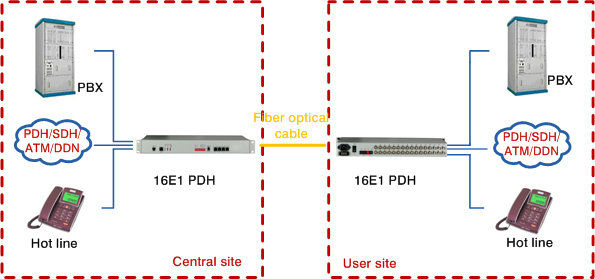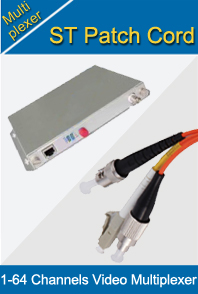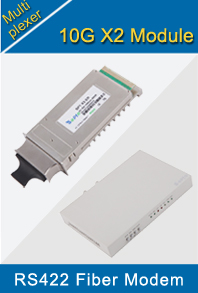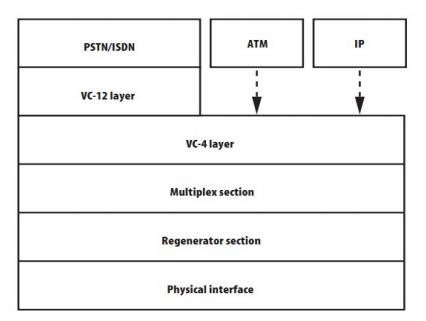-

- Sopto Home
-

- Special Topic
-

- Multiplexer Knowledge
-

- Why to develop SDH Multiplexers?
Multiplexer Knowledge
- Why is Multiplexing Needed in Data Communication Systems?
- What is Concept of Multiplexing in Telephone System?
- What is Digital TV Frequency?
- Outlook of the WDM Networks
- DWDM Technical Overview
- CWDM Technical Overview
- How to Activate Cable Modems?
- How to Install a Fiber Optic Modem?
- How do I Choose a Best Fiber Modem?
SOPTO Special Topic
Certificate



Guarantee
Except products belongs to Bargain Shop section, all products are warranted by SOPTO only to purchasers for resale or for use in business or original equipment manufacturer, against defects in workmanship or materials under normal use (consumables, normal tear and wear excluded) for one year after date of purchase from SOPTO, unless otherwise stated...
Return Policies
Defective products will be accepted for exchange, at our discretion, within 14 days from receipt. Buyer might be requested to return the defective products to SOPTO for verification or authorized service location, as SOPTO designated, shipping costs prepaid. .....
Applications
Multiplexers can be used to connect PBX, Hot line and other devices of network from central site to user site through fiber optical cable.
SOPTO Products
- Fiber Optic Transceiver Module
- High Speed Cable
- Fiber Optical Cable
- Fiber Optical Patch Cords
- Splitter CWDM DWDM
- PON Solution
- FTTH Box ODF Closure
- PCI-E Network Card
- Network Cables
- Fiber Optical Adapter
- Fiber Optical Attenuator
- Fiber Media Converter
- PDH Multiplexers
- Protocol Converter
- Digital Video Multiplexer
- Fiber Optical Tools
- Compatible
Related Products
Performance Feature
High integration desig
Low power consumption
Good EMC, EMI
Stable and Reliable
Multiplexer Knowledge
Recommended


Why to develop SDH Multiplexers?
In turn, network providers began to benefit from the many technological and economic advantages this new technology introduce including:
High transmission rates
Transmission rates of up to 10 Gbps can be achieved in modern SDH systems making it the most suitable technology for backbones – the superhighways in today's telecommunications networks.
Simplified add and drop function
Compared the older PDH system, low bit rate channels can be easily extracted from inserted into the high-speed bit streams in SDH. It now no longer necessary to apply the complex and costly procedure of demultiplexing them remultiplexing the plesiosynchronous structure.
High availability and capacity
With SDH, network providers can react quickly and easily to the requirements of their customers.
Reliability
Modern SDH networks include various automatic back-up circuit and repair mechanisms which are designed to cope with system faults and are monitored by management.
Interconnection
SDH makes it much easier to set up gateways between different network providers and to SONET system. The SDH interfaces are globally standardized, making it possible to combine Nes from different manufacturers into a single network thus reducing equipment costs.
The synchronous digital hierarchy in terms of a layer model
SDH networks are subdivided into various layers directly related to the network topology. The lowest layer is the physical layer, which represents the transmission medium. This is usually a glass fiber or possibly radio or satellite link.
Optical fibers are the physical medium most commonly used in SDH networks. The advantage of these fibers is that they are not susceptible to interference and can transmit at very high speeds. The disadvantage is in the relatively high cost of procurement and installation.
The regenerator section is the path between regenerators. Part of the regenerator section overhead (RSOH) is available for the signaling required within this layer.
The remainder of the overhead, the multiplex section overhead is used for multiplex section needs. The multiplex section covers the part of the SDH link between multiplexers. The carriers or virtual containers (VC) are available as payload at the two of this section. The two VC layers represent a part of mapping process (the tributary signals, such as PDH and ATM are packed into SDH transport modules).

SDH Layer Model



